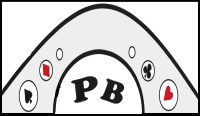Take out doubles are a hugely useful bid. They have a few key features, which if you can get to grips with, will allow you to take the trouble out of doubling!
What is a Take-out Double?
Broadly, there are two kinds of double. The first is a penalty double. These doubles say that you do not think that opponents will make a bid contract and penalises them more heavily for going off. We will not be discussing penalty doubles much here.
We are concerned with the second kind of double – the take-out double. It is not usually the case that you will want to penalty double a low level contract, as opponents are likely to make it. So instead of wasting the double card in the early auction we designate any double of a bid up to 3 Hearts as a take-out double. Take-out doubles can be further categorised into things like responsive or negative doubles, but they are all a kind of take-out double and have the same key features so it is probably easier not to get bogged down in unnecessary labels!
What Does a Take Out Double Do?
What makes doubles so useful? They have 2 key features.
- Take-out doubles are FORCING. They mean you can keep the auction going, even when you do not have a long suit or are not sure what to do.
- They show UNBID SUITS. The exact suits shown depend on the auction so far, but doubles can allow you to show 2 or 3 suits at once!
B unpacking the consequences of these features we can become masters of the double!
Doubles as Forcing
Take-out doubles are forcing. This means that they cannot be allowed to be the last call of the auction. This is why they are called take-out doubles. They must be taken out as the last call.
This does not necessarily mean that your partner has to bid, if the interim hand bids than your partner does not as the double is no longer active.
If partner makes a take out double then this may or may not be a forcing bid. It depends on whether the next hand bids.

In this auction the hand after the double has passed. This means that West is now FORCED to bid something.

This time South has bid something. This has taken out the double. West can still bid if they want, but they are allowed to pass.
Either way a double will ensure that you get another bid in the auction if you want to take further action.
Showing Points
Since you may well be forcing partner to bid, make sure you have enough points to play at whatever level you are forcing to. For example if you double 2 Spades, partner will have to bid at the 3 level and you need to make sure you have enough points for this.
This is why doubles also show points enough to continue the auction. The exact number will depend on what (if anything) partner has shown.
Showing the Unbid Suits
Take-out doubles also show ALL suits unbid so far in the auction. This means that if opponents have opened 1 Club and you double you are showing the other 3 suits. But if partner has opened and opponents have overcalled then a double shows the TWO unbid suits.
Prioritising the Majors
We are always looking to get into a major contract if we can. If you only have a 4 card major it can be tricky to show it though. So doubles also show a 4 card suit in the UNBID MAJOR. For example if opponents have opened 1 Heart and you double you are showing 4 Spades.
More Points, Less Shape
If you have a strong hand you do not need to conform to the shape requirements of a double. This is because you will have enough points to bid on your next turn.
Conversely, to double and then bid a new suit shows a strong hand.
Conclusion
Doubles can seem overwhelming, but they are really worth learning. You will be surprised how often the opportunity to double comes up.
Learn More…
For a more in depth guide to take-out doubles, check out our digital resource pack. It includes a written guide, board examples with commentary and an interactive quiz!
